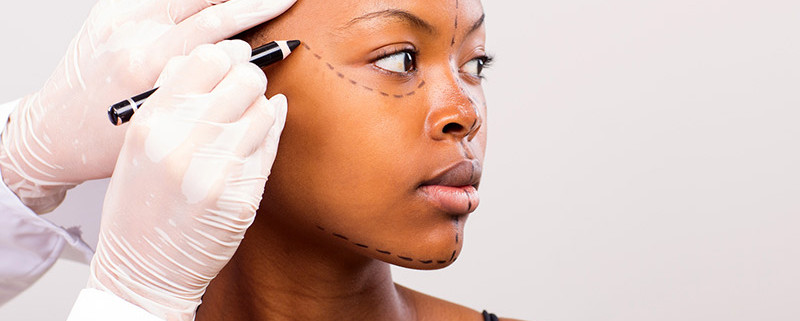What’s New with Dermal Fillers?
What’s New
Dermal fillers have been in use for several years. All non-permanent fillers have an impressive safety record allowing them to become a prime mode of rejuvenation.
With several dozens of fillers available around the world, we have only 6-7 products approved by FDA. Sadly, even the largest filler manufacturers have only handful of their products on our market while in Europe, South America and Asia several lines of dermal fillers are available.
The majority of fillers around the world are hyaluronic acid products. These are transparent gels of different thickness and different physical characteristics.
The thinnest products are used for very superficial injections in order to maximize skin hydration and provide fresh look. These products may need a touch-up every 2-3 months for the maintenance.
Thicker products provide much longer duration. The thickest hyaluronic acid fillers are used for the volumizing of face and other parts of the body. Their effect may last in certain areas for 2 yrs or more.
The concept of dermal filler has changed dramatically around the world almost 4 years ago; the injections concentrate on volume restoration and areas of enhancement rather than simplistic filling of the visible lines.
Restoration of the volumes and understanding of light perception will provide an ultimate artistic/aesthetic results.
The most popular hyaluronic acid fillers around the world for the restoration of facial volumes areTeosyal Ultimate, Restylane SQ, and Juvederm Voluma. For non-facial volume restoration the Macrolane (made by the makers of Restylane) has been very successfull for over 2 years. None of the above are available in the US at this time. But, stay tuned. I predict that FDA will approve at least some of them soon since they clearance has nothing to do with their safety.
The hyaluronic acid fillers available on the US market are: Juvaderm Ultra, Juvaderm UltraPlus, Restylane, Perlane, Prevelle and Hydrelle. In practice, the last two are of minimal interest due to their suboptimal characteristics. Even with a minimal choice of available products one may expect excellent aesthetic results and fairly long lasting effect.
Personally, my favorite hyaluronic acid products are Teosyal Ultimate and Juvaderm UltraPlus. Teosyal Ultimate is the newest addition to the extensive line of hyaluronic acid products from a Swiss company Teoxan. Released just few weeks ago it provides almost perfect volume restoration when using in deep injections; its high thickness and great elasticity result in significant resistance to deformation and degradation. Consequently, this filler may last 18 months or more.
I was very impressed with the ease of Teosyal injection, its smoothness and ability to restore the volume when injected using the no-needle technique. Unfortunately, Teosyal is not yet approved by FDA.
Juvaderm UltraPlus is overall great product for various applications. However, due to it’s small syringe volume and relatively high price, I find it difficult to use this product for larger volume restoration. It is unbeatable for lips and more superficial injections.
Aside of the hyaluronic acid fillers there are very few non-permanent products on the market:Radiesse, Sculptra and collagen fillers. The collagen fillers are of marginal use due to their short lifespan. Sculptra has markedly delayed visible response which may be difficult to monitor and plan ahead although those who use it report great results.
Radiesse remains an excellent filler for volume restoration and deep lines. In addition, at present pricing trends, it remains the most economical/cost effective agent with the largest syringe volume and relatively long lasting effect.
The permanent and semi-permanent synthetic fillers are still available. I do not use them and most likely never will. I would never recommend them to my patients under any circumstances. Once injected they are irretrievable.
Injections
The standard injections of dermal fillers can be quite unpleasant along with frequent bruising and bleeding. One can reduce the discomfort of injection by numbing the area with Lidocaine.
Although some use topical anaesthetic, these provide only superficial effect that is of minimal help with deep injections.
Alternatively, the anaesthesia can be achieved by injecting Lidocaine near the nerve supplying the injected area.
Up until recently, my preferred technique for needle injection involved mixing every product with the Lidocaine before every injection. This allows to numb the area during initial stages of injection making it much more comfortable.
But, to provide nearly painless injection, I begun to use a blunt technique that recently has revolutionized the majority of filler injections in many countries.
This technique gives the patient an amazing advantage over the traditional needle injections; it allows a nearly painless and precise injection, eliminates the need for multiple injection entry points and the risk of bleeding or bruising is dramatically reduced.
To summarize, the dermal fillers are here to stay. I expect much more fillers to be approved by FDA within next several months to provide our patients with the best choice of products.
But the most encouraging to our patients is the fact that the times of painful and bruising filler injections may well belong to past.
Meantime I will continue to take every opportunity to use the newest products in Europe before they reach our market.
One remains unchanged: LESS is MORE!



